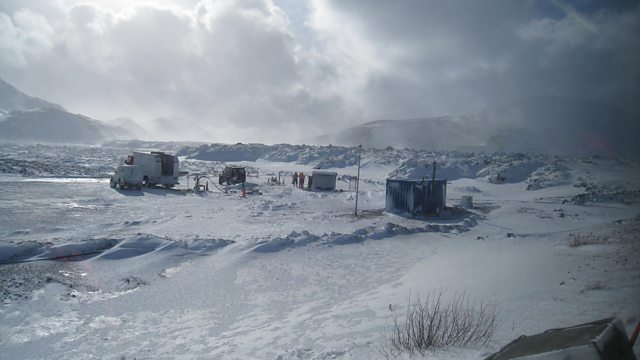Fast Storage of CO2 in Volcanic Rock
Fast carbon storage; New Flores hominin fossils; Hatching shell-less eggs; Uses for egg shells; Lisa Pathfinder success; Birds on the East Asia Flyway; Algal blooms in Chile
Atmospheric carbon dioxide injected into volcanic rock as part of a pilot project in Iceland was almost completely mineralized, or converted to carbonate minerals, in less than two years. The results suggest that basaltic rocks may be effective sinks for storing carbon dioxide removed from the atmosphere.
New Flores Hominin Fossils
An international team of researchers has uncovered the fossilised remains of ancient hominins in Indonesia, which appear to be the ancestors of Homo floresiensis, the tiny species of human, affectionately dubbed the ‘Hobbit’, that stood at just one metre tall.
Hatching Shell-less Eggs
Japanese school kids from Oihama High School near Tokyo have put up a video online showing how they hatched chickens from shell-less eggs.
By following a scientific protocol, published 2 years ago in Japan’s Journal of Poultry Science, the technique involves a plastic cup, some air-permeable plastic wrap, calcium supplements in distilled water, pure oxygen and a standard incubator.
The video, the pupils posted online, shows the embryo developing. Very early on you can see the eye forming and the tiny heart beating. They managed to hatch 8 of the 14 eggs they tried.
Other Uses for Egg Shells
Egg shells can be used as a disinfectant. When they are ground up, heated and put in water, they increase the pH and deter microbial growth.
When egg shells are ground up to the nanoscale, they can be used with polymers to improve the strength of biodegradable plastic.
Lisa Pathfinder Success
The mission to demonstrate technologies needed to detect gravitational waves in space has been a stunning success.
The Lisa Pathfinder satellite was sent into orbit to test elements of the laser measurement system that would be used on a future observatory. Performance objectives were exceeded on the very first day the equipment was switched on.
Algal blooms in Chile
Chilean scientists are trying to work out whether bad practice at salmon fisheries, themselves devastated by an algal bloom, is responsible for the poisoning of the shell fisheries. Or was the devastating ‘red tide’ a natural phenomenon, made worse by El Nino conditions?
Image: CarbFix pilot CO2 injection site during CO2 injection in March 2011. Credit: Martin Stute
Last on
More episodes
Previous
Broadcasts
- Thu 9 Jun 2016 21:32GMT91�ȱ� World Service except East and Southern Africa & News Internet
- Fri 10 Jun 2016 01:32GMT91�ȱ� World Service Americas and the Caribbean
- Fri 10 Jun 2016 02:32GMT91�ȱ� World Service Online, Europe and the Middle East & UK DAB/Freeview only
- Fri 10 Jun 2016 03:32GMT91�ȱ� World Service East Asia & South Asia only
- Fri 10 Jun 2016 04:32GMT91�ȱ� World Service Australasia
- Fri 10 Jun 2016 06:32GMT91�ȱ� World Service East and Southern Africa & Europe and the Middle East only
Podcast
-
![]()
Science In Action
The 91�ȱ� brings you all the week's science news.


